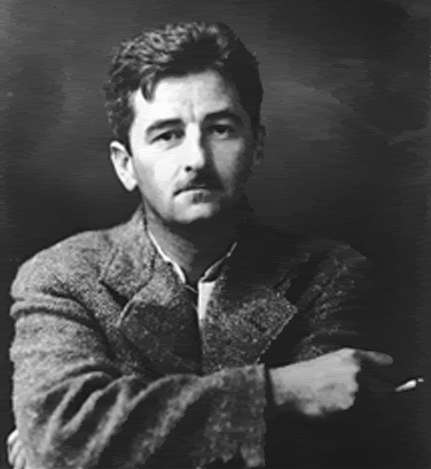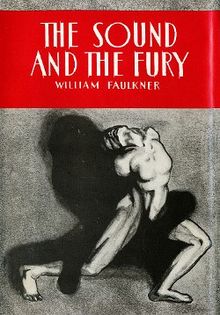I s The Sound and the Fury Faulkner’s most difficult book? It certainly has the reputation of being a merciless novel, almost deliberately obscure for the first 75 pages or so especially, and then only moderately elusive after that.
s The Sound and the Fury Faulkner’s most difficult book? It certainly has the reputation of being a merciless novel, almost deliberately obscure for the first 75 pages or so especially, and then only moderately elusive after that.
Recall, the book is divided into four sections, the first and main story being told by Benji, the 33-year old retarded younger brother. His is “sound and fury signifying nothing,” “a tale told by an idiot.” But only Benji can tell the story: mother is sick, Quentin is dead, Caddy is run off with another man, and Jason is a “Bascomb”.
The confusion of time is a key component in the book. The four stories are told out of order. Benji’s especially is nearly impenetrable; he has no concept of time. Quentin’s watch has no hands.
The contemporaneous or “present day” portion of the book takes place during Passion Week and the scene in the church on Easter is the climax of the story. 
Dilsey is prescient, the black prophetess; “I’ve seen the first and I’ve seen the lst of the Compsons.” The story is of the destruction of a prosperous, white family in the south. The black family knows what’s going on. “They endured,” says the narrator. The Compsons did not. It was observed in our group that Dilsey was the main character of the book.
This summary is itself confused, as much because of the difficulty of the book as by the tardiness of this report. We read this book for November’s meeting. But as usual, a complexity and punishing demands of Faulkner’s prose yielded somewhat to several hours of our collective deliberations. And by the end of our meeting even those first-timers who found the book a herculean effort to read came away loving the story, professing its genius and its insight into the human condition.
Keep ‘em coming, J-man!
Matt